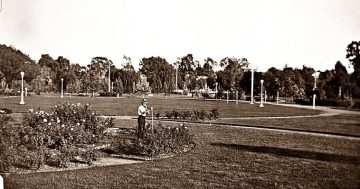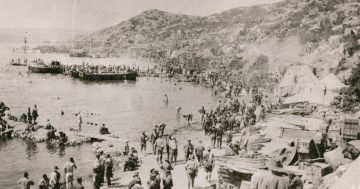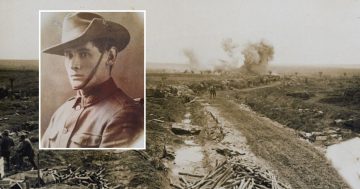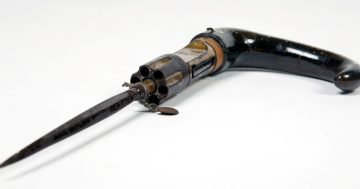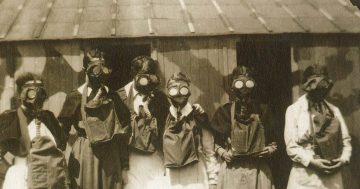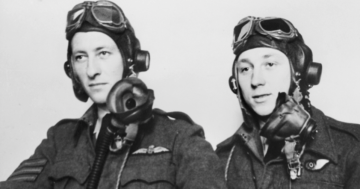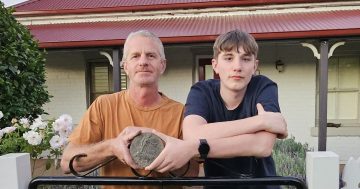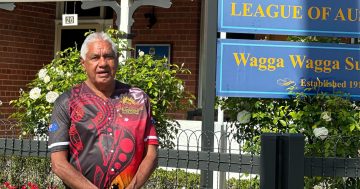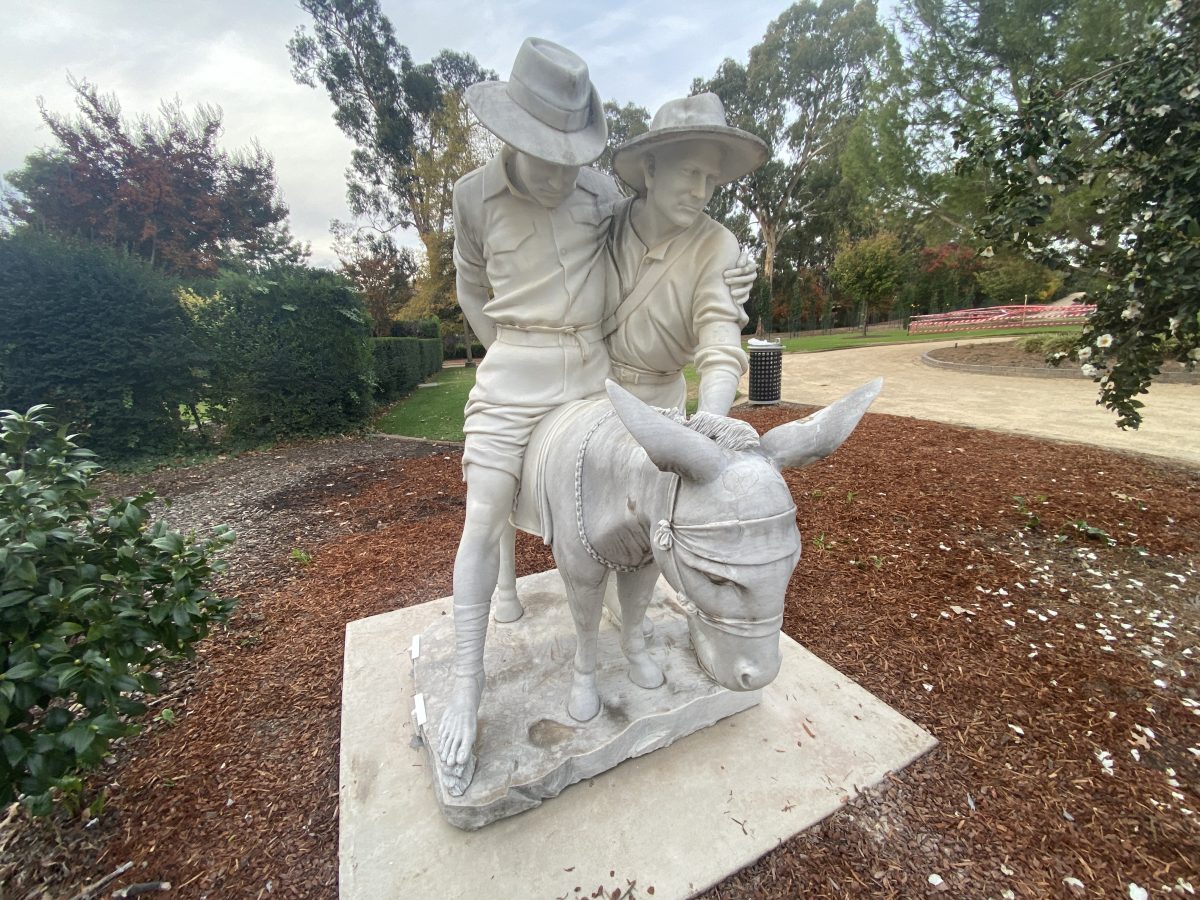
The new statue in Wagga’s Victory Memorial Gardens depicts ‘Simpson and his donkey’. Photo: Chris Roe.
With the arrival of a new statue in the gardens of Wagga Wagga’s Victory Memorial Gardens, we thought we’d take a moment to reflect on the man, the myth and the birth of an Anzac legend.
The life-sized bonded marble statue was apparently donated by a local property and is a replica of the original bronze sculpture, Simpson and his donkey, 1915 that stands outside the Australian War Memorial in Canberra.
The image of Private John Simpson Kirkpatrick and his donkey transporting wounded diggers at Gallipoli has become an icon of the Anzac mythology.
His military service in the Australian Imperial Force (AIF) was brief, but the 22-year-old English stretcher-bearer paid the ultimate price and is seen as a poignant symbol of mateship, courage and sacrifice.
Born in Britain in 1892, John Simpson Kirkpatrick joined the merchant marine when he was just 17 and was working as a labourer in Australia when the war began.
He enlisted in the AIF in Western Australia under the name John Simpson, allegedly in an attempt to secure passage back to Britain to see his mother.
After training outside Perth, it was on to Egypt, and then Turkey with the 3rd Field Ambulance, Australian Army Medical Corps.
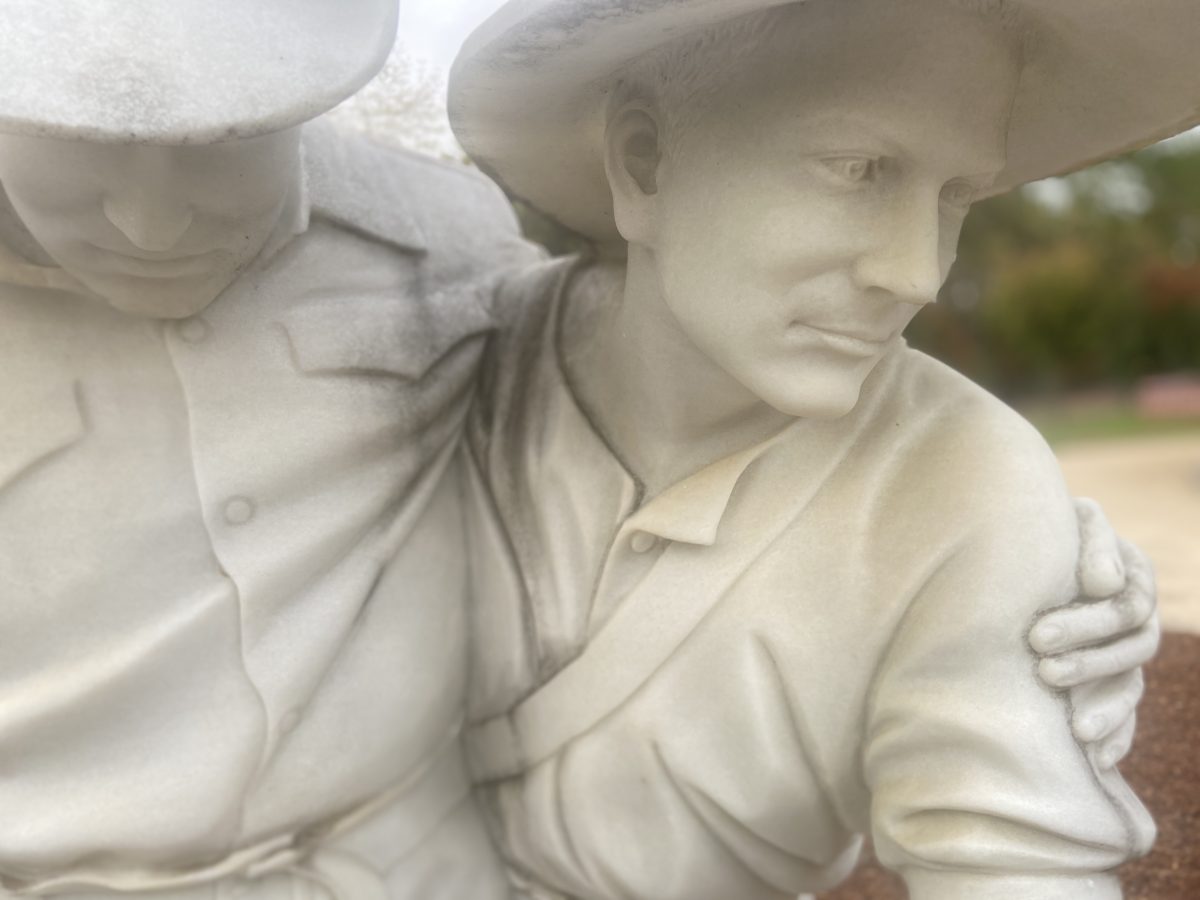
The legend of the man and his donkey has become a symbol of Aussie mateship and sacrifice. Photo: Chris Roe.
He landed at ANZAC Cove on 25 April and was notable for his skill in handling donkeys and his calm under fire as he ferried wounded men up and down ‘Shrapnel Gully’ to the beach.
Just 24 days after landing, on 19 May 1915, he was shot through the heart as he led his donkey into Monash Valley to retrieve casualties.
Days after his death, Australian war correspondent Charles Bean penned a moving firsthand account of “the man with the donkeys” that made Simpson one of the enduring legends of Gallipoli.
“Everybody knew the man with the donkeys and everybody knew that if ever a man deserved honour in this war, it was he,” he wrote.
“You cannot hurry a donkey very much, however close the shells may burst, and he absolutely came to disregard bullets and shrapnel.
“The man with the donkey became fatalistic – if they were going to hit him, they would whatever his precautions.
”For nearly four weeks he came up and down that valley – through the hottest shrapnel, through the aimed bullets of the snipers and unnamed bullets which came over the ridges.
“When the shells were so hot that many others thought it wiser to duck for cover as they passed, the man with the donkey calmly went his way as if nothing more serious than a summer shower were happening.”
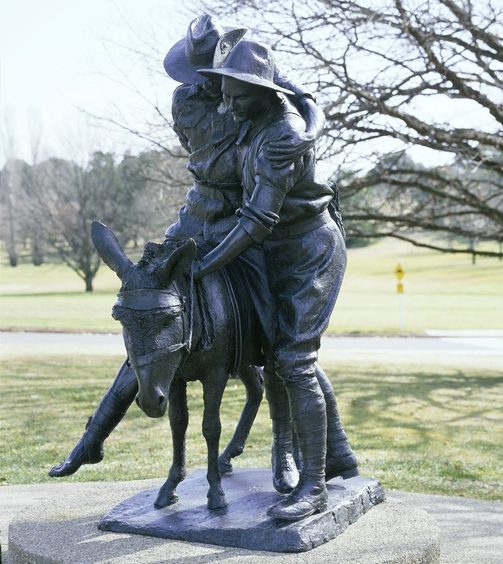
Simpson and his donkey, 1915 by sculptor Peter Corlett. Photo: AWM.
The legend of the man with the donkey, incorrectly referred to as ‘Murphy’, soon grew, and unconfirmed accounts of his exploits began appearing as Australia sought to make sense of the Anzac slaughter.
An account in The Sun newspaper on 27 October 1917 set the record straight with the tale of the “Real Murphy of Anzac – John Simpson Kirkpatrick – Killed in Shrapnel Gully”.
“A number of Turkish mules were captured one day, and ‘Murphy’ annexed two of them, which he named Duffy no 1 and Duffy no 2,” the story explained.
“Through shellfire and rifle fire thereafter, ‘Murphy’ with one or both of his mules, carried wounded men from the field proper to the dressing stations, often as many as 20 a day.
“His work, however, was ended by a bullet which found his heart during the fierce Turkish attack on 19 May 1915.
“‘Murphy’ had traversed Shrapnel Gully four times that day with wounded, and he was returning on the fifth trip when as he rounded the famous point named ‘Bloody Angle’, a machine-gun bullet stopped him.”
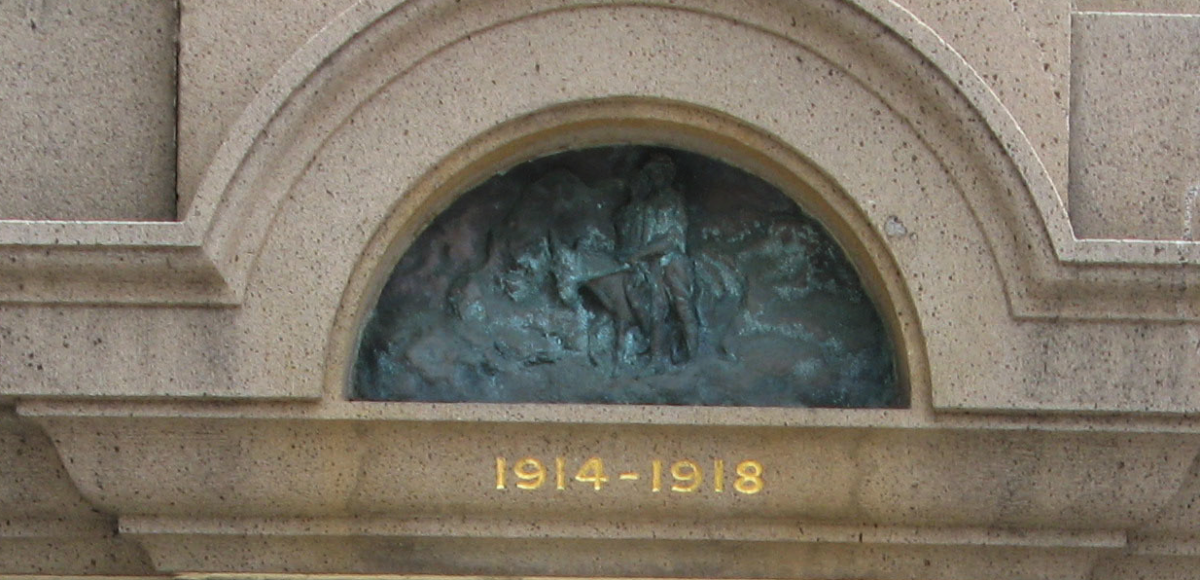
A bronze relief of Simpson was cast in 1916 for the Manly War Memorial. Photo: Northern Beaches Council.
The first memorial depicting Simpson was erected in Manly in 1916 by the family of Alan David Mitchell, who was the first soldier from the Sydney suburb to fall.
In honour of the men who carried their mortally wounded son from the battlefield, the Manly War Memorial features two oval relief sculptures in bronze, one depicting an ambulance wagon, and the other, the man and his donkey along with the words, “In memory of those gallant men of Manly who so gloriously gave their lives for the sake of Humanity and Justice”.
Simpson’s story was revived in the wildly popular 1965 book by Sir Irving Benson, The Man with the Donkey. John Simpson – The Good Samaritan of Gallipoli, drawing parallels to the classic Christian parable.
The statue that is replicated in white bonded marble in Victory Memorial Gardens was originally done in bronze by sculptor Peter Corlett.
Unlike most war memorials, there are no weapons. Just two men and a donkey, clinging together in a moment of pathos, service and sacrifice.
Lest we forget.







